Despite a cooling market, these five cars posted big gains
Another quarter has come to pass, which means another update to the Hagerty Price Guide is here. Following a confusing start to the year that created more questions than answers, some clarity has come to the market. While indications are that the market is cooling off at the moment, it is important to remember that we’re overall still at a more active point than before the pandemic.
Positive movement for some car values reflect this situation, and the thriving sub-$50,000 market is a perfect demonstration of the slower-but-healthy collector world we’re currently inhabiting. Of our biggest movers for this most recent update, the bulk of them were solidly in this “affordable” category. That said, there has been some love spread out among six- and seven-figure cars, too. Here are five of the most significant movers from the latest Hagerty Price Guide.
2004 Volkswagen Golf R32 +46%
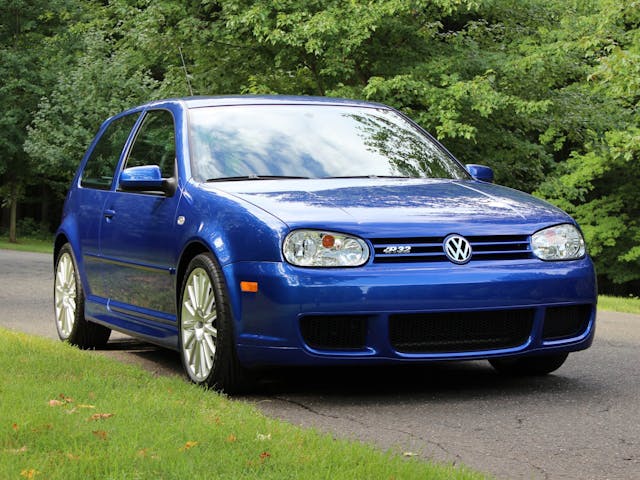
For once, when we say R32, we are not talking about Nissan GT-Rs (a shocking departure for your author), but instead the hottest of the mid-2000s hot hatches. The Mk IV Volkswagen Golf R32 is one of the newest additions to the Hagerty Price Guide and it has been doing exceptionally well in the market.
Launched in Europe in 2003, the R32 was a much meaner GTI in every way. Of course, the headlining feature was the 240-horsepower, 3.2-liter VR6 engine, but unlike the front-wheel-drive GTI, the R32 had a Haldex all-wheel-drive setup installed to better distribute the horsepower. This propelled these cars from 0-60 mph in 6.6 seconds, which was an impressive feat at the time. The R32 was such a success in Europe that VW decided to share them with the American market for 2004. It was just as popular here, quickly selling out all 5,000 units destined for the States.
These days, Mk IV Golf R32s are in demand, with clean, well-maintained cars transacting in the $30,000 range (about original MSRP), and as-new cars bringing substantially more. R32s are appreciating quickly: it wasn’t more than a year ago that an example in perfect condition could be had for that same $30,000. Meanwhile, a 97-mile example sold on Bring A Trailer in February for $109,000, including fees. Is a six-figure price tag repeatable for the R32? Well, they’re limited-production, quick, and iconic in the hot hatch world. It wasn’t long ago that the Hundred Grand Club seemed implausible for the Integra Type-R, so it’s not out of the realm of possibility for the R32. You decide.
1977 Pontiac LeMans Can Am +40%

The muscle car era may have come to an end by the early 1970s, choked to death figuratively by insurance costs and literally by smog regulations. But that didn’t mean auto manufacturers didn’t try to keep the party going. A plethora of cars with sporty graphics packages and aerodynamics kits started to hit the market shortly after, bringing us hits such as the Dodge Magnum, Chevy Laguna and the Oldsmobile Hurst/Olds. The undisputed king of 1970s sports packages, however was Pontiac. Best known for the Trans Am and its role in Smokey and the Bandit, they also brought about the sporty, mid-size Grand Am and, perhaps best of all, the limited run Can Am.
This 1977-only, LeMans-based mid-size melded together the best parts of the LeMans and Trans Am. The attractive colonnade styling was adorned with a set of Rally II or snowflake wheels, Trans Am-styled spoilers, and most importantly, a shaker hood scoop. Under the hood came two options, the venerable 400 Pontiac, or if you lived in California or high-altitude areas, a 403-cid engine sourced from Oldsmobile. The LeMans interior was reportedly upgraded with gear from the Grand Prix for a sportier look. Overall, the Can Am was a hit. Orders greatly exceeded the planned 2,500-unit production run, but a broken spoiler mould halted production at 1133.
The Can Am’s 40 percent surge puts it toward the top of cars that saw their values increase, but it isn’t an outlier in this segment, or for Pontiac. A notable uptick in activity in mid-size Pontiacs from the mid-70s means that its sister car, the Grand Prix, also experienced a bump in value to the tune of around 30 percent. Don’t worry though, these cars are still attainable, with a “good” example running around $25,000 and a show-quality car costing around $42,000. Not a bad deal when you consider how special these cars are. However, as anyone with experience with mid-’70s GM iron is well aware, the increase in interest hasn’t yet equated to restoration support, so it is still crucial to buy the best example you can find. Those in this market likely know this well, and there’s a good chance that has contributed to rising prices at the very top of this segment.
1997-2004 Lotus Esprit S4 V-8 +33%
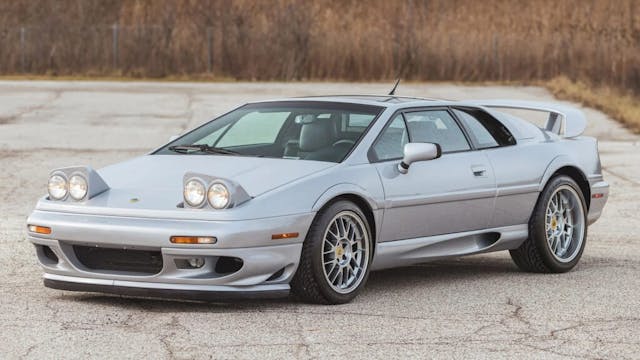
Up until recently, the S4 Lotus Esprit hadn’t garnered the same attention as its analog sports car peers. To an extent, that makes sense. By the early ’90s, the Esprit was old—the model had been around since 1976, and exotics were becoming ever more capable. To help extend its life, Lotus gave the car a substantial facelift in 1994, and a twin-turbo V-8 debuted in 1996 to help it keep pace with contemporary peers like the NSX, 911, and even various Ferraris. Despite that, it never attained the legendary status of most of those models. That lack of interest in the collector market appears to have turned a corner, however.
“More of them have been coming to market and at numbers too big to ignore” says senior auction editor and Lotus guru Andrew Newton. “I think these were undervalued for a long time relative to their rarity, looks, and performance,” he adds. As values of more well-known brands have gotten out of reach, enthusiasts may be looking toward the V-8 Esprit’s similar performance on a relative budget. An excellent example can be had for just under $100,000, a fraction of its contemporary competition.
Audi Coupe GT +27%
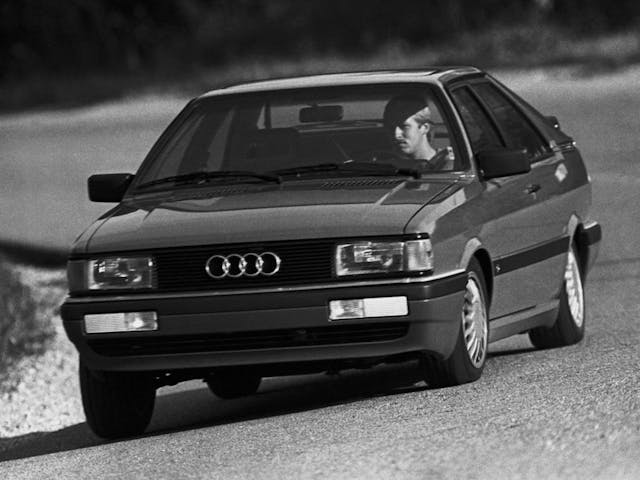
Audi’s Coupe GT doesn’t garner the attention of the sportier Quattro, but it is not the Quattro that posted big gains this quarter. Positioned as a downmarket car compared to the Quattro, the Coupe GT brings all the looks to the table without the frills. As the lack of the “Quattro” nomenclature would suggest, these were not full-time all-wheel-drive cars. The Coupe GT was available with the five-cylinder engine that Audis from this era are so well known for, but there was no fire-breathing turbo option.
While the Coupe GT is not a car often seen on the market these days, they have been commanding higher and higher prices each time they do surface. Rarity, a lower entry point than the Quattro, and general economic forces like inflation and the expanding market over the past three years are all likely contributing factors. Not to worry though, the best-in-the-world example is still a sub-$30,000 car and a nice driver is less than half that. The challenge? Finding one.
1998-1999 Mercedes-Benz CLK GTR +30%
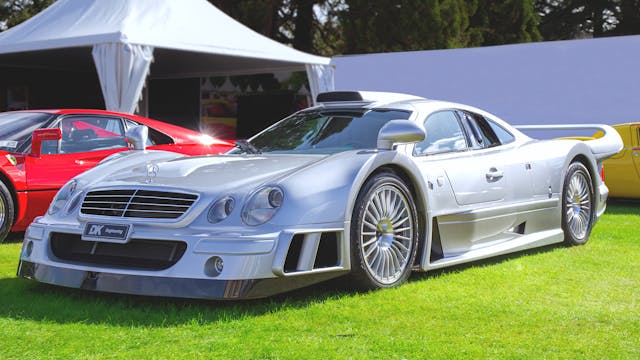
They had liftoff at Le Mans back in 1999, and now Mercedes-Benz CLK GTRs are soaring in value. Essentially a street legal version of a Le Mans prototype, it should come as no surprise that the CLK GTR’s values are tracking alongside the broader rise of supercars from this era, and now touch $10 million for examples in top condition. The closest comparisons for the insanity and exclusivity of the Merc are the McLaren F1 and Porsche 911 GT1, and the McLaren is a $20 million+ car without the Le Mans package installed from the factory. With a much more common Ferrari F50 now worth $5.65 million at the top end, the CLK GTR’s price becomes much more understandable.
***
Check out the Hagerty Media homepage so you don’t miss a single story, or better yet, bookmark it. To get our best stories delivered right to your inbox, subscribe to our newsletters.
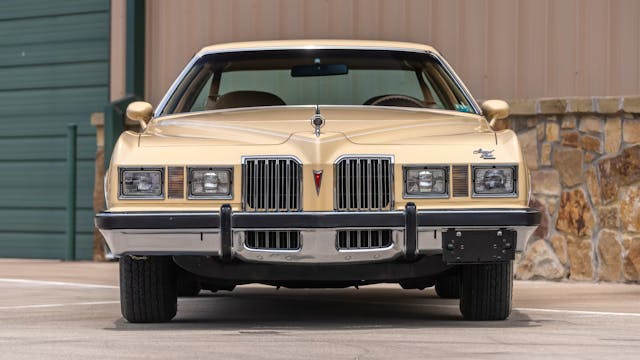


Being old school, I laugh every time I look at what is considered a “classic car” today. SMH
Come on man, terrible choice of cars, the last car I want to look at is some foreign gaudy over priced Mercedes. Methinks the writer leans toward the foreign market and chucked that Pontiac in there as a token. I might be wrong but it looks that way. We went to a vintage car show and the rows of old cars were beautiful. In drives a hamburger in a new BMW convertible wearing a cowboy hat and parks between two classics, gets out, opens his hood to show off his plastic and hose covered engine. Does anybody see how wrong this is?
Yes Dale, that is ABSOLUTELY 100% wrong!
These choices were based on the cars which gained the most in the recent Hagerty Price Guide update. No bias involved when it comes to what the numbers tell us. As your author, I can honestly tell you that I really like all cars and have owned a few classics, my 69 Grand Prix is by far the favorite that’s passed through my garage.
You’re not quite off the hook just yet. That Mercedes, never seen one, never heard of one like that, never been passed by one. I think the average Hagerty ready is, like what is that doing here. nobody is going like, darn, I was just going to buy one and now I can’t, the price just went up. I admit I am pro American cars, however, there are some foreign cars that appeal to me like the Lotus that would show up at our local autocross in the 60s. Chevy powered Healy is a favorite. It is probably difficult searching for content for articles, but less focus on the foreign cars and especially ones nobody can afford or identify with. Most of us are just average folks who love old cars. Thank you,
There also were reports of problems with the mold for the rear spoiler, which were never fixed and as a result production was ceased. The Standard Catalog of Pontiac 1926-1995 lists total production at 1377. There is one here in town at the monthly cruise night. As a Pontiac guy, I always liked those cars. Even though they didn’t sell very well.
Sorry. I am speaking about the Can Am.
I remember when the Can Am Pontiacs came out. I thought Can Am was a ridiculous name for that car, and I still do. I wouldn’t pay any amount for one then or now.
Hagerty has recently updated some of their terms: “classic” now refers to “any car ever built”
Firstly. . . I really look forward to the Hagerty Weekend road trip. It makes for lusty sighs and a few “Oh wells”.
I’d like to comment on the Lotus Esprit or its predecessors. I’ve never driven an Esprit but I’m of an age that I remember and have driven Lotus Cortinas and Lotus Elans. I had the pleasure of driving a brand new Lotus Cortina at the Ingleston race track outside Edinburgh. It was gutsy and had sufficient power that most of the corners at the track had to be carefully negotiated. Not bad for a four cylinder engine with crossflow head and twin Webbers (I believe). The Elan was my dream car at the time. It certainly had the elan the name promises. I had a trial drive in one with a rather keen salesman who placed a five pound note on the dash and told me that on initial “go” command, if I could grab the five pound note off the dash before he hit third gear, I could have it! I failed. . . but what a rush! Thanks Colin Chapman!
The Grand Prix at the top looks exactly my dad’s except his was white. I loved the car as a kid.
It’s so good to know that the CLK GTR is pushing 10 million. Very useful information for all of us. I’m sure.
Surely Hagerty’s team of wordsmiths might dredge other terms for anything out of the Kelley Blue Book than the overworked, now meaningless “Classic?”
No one used that word in connection with automobiles until LA lawyer and Motor Trend columnist Robert J. Gottlieb coined it in 1951 for the white elephants on the back row of any big city’s used car lot available for a song because they were gas hogs and there was no source for tires. The next year, a club so named for such barges and finely wrought “fire trucks” was formed by several 20- and 30-something fellows largely in the greater NYC tri-state area.
In 1972, a Duesenberg first owned by Greta Garbo became the first automobile to approach $100,000 at public auction. Suddenly, “Classic” pizza, Coke, “muscle” cars, Mustangs, Edsels, Pontiacs, Borgwards, etc.
Enough already. Anyone whose car value dependent on being entitled “Classic” probably overrated, overhyped, overpriced.
Ok. Everyone with no imagination but slim lexicon start whining.
I was a senior in high school when the Can Am arrived. A kid in my class got one for a graduation gift. Within months it was wrapped around a tree. Interesting to note that I seem to remember the Can Am being the fastest American production car in 1977, being faster than the 77 Corvette. Less than 200 horsepower but a nice handling package and great looks in my opinion. I lusted for one and 30 years ago found a rusted one with a locked up motor for $500. I left it sit at a body shop for several months debating whether or not the money would be well spent for a restoration. The rear spoiler was all there but the body was too far gone to save from the road salt of Nebraska winters. I sold it for $1000 and still have some pics of the car. Amazing what people will pay for a hunk of metal these days.
I don’t know how the author could be so far off the mark on the Coupe GT.
15 thousand would be an immaculate car, they haven’t approached anything near 30 thousand.
I’ve owned several and they are getting very difficult to keep on the road.
You can’t get window regulators, and they fail…. A lot.
Windshields are also impossible to find, people have resorted to having them shipped over from Europe.
Meant my above post to go with Sajeev Mehta’s “What classic car was underappreciated when new?” on today’s Saturday Hagerty online edition. But these listicles are interchangeable, so you get the point.
Another car up big is the 944/968, but still available in the $20’s. These are pricey to maintain, but very high quality with excellent performance, inside and out zinc coated bodies, and good durability of major components.
Bring a Trailer has ruined the used car industry. And it should also be said that people listing cars for sale on Hagerty are out of their mind with the prices they are wanting.
BaT has done for collector cars what eBay did for every other collectible. The general public now has access to the information that was before only within collectors groups.
The deals are out there. You can still spot a car for sale in the newspaper or in a driveway. Just now, the seller may know what the car really is.